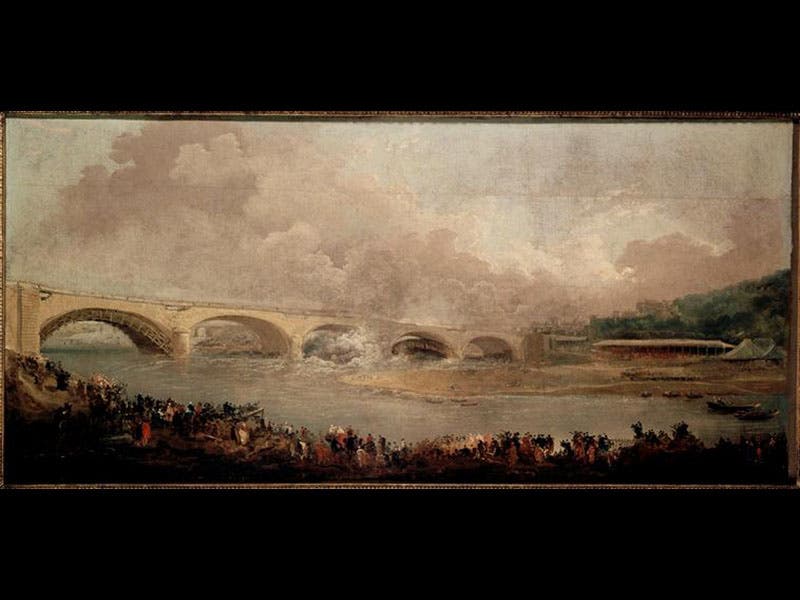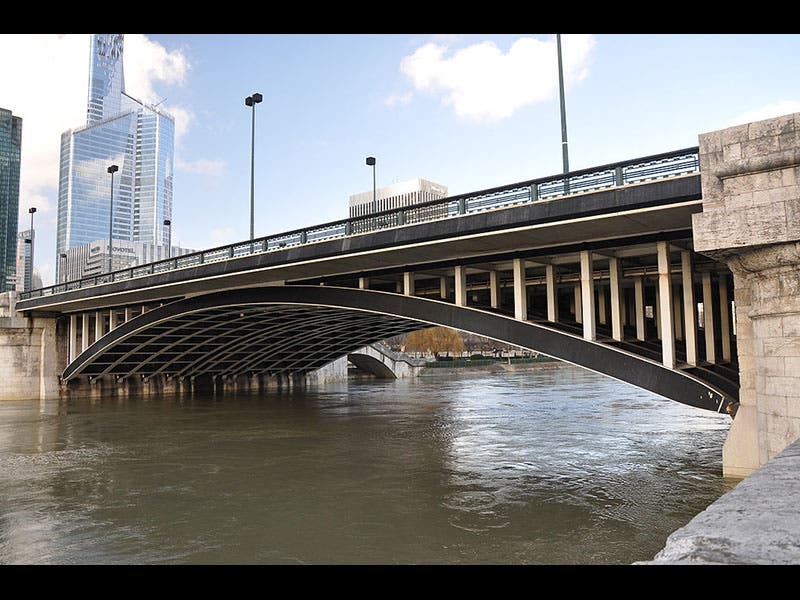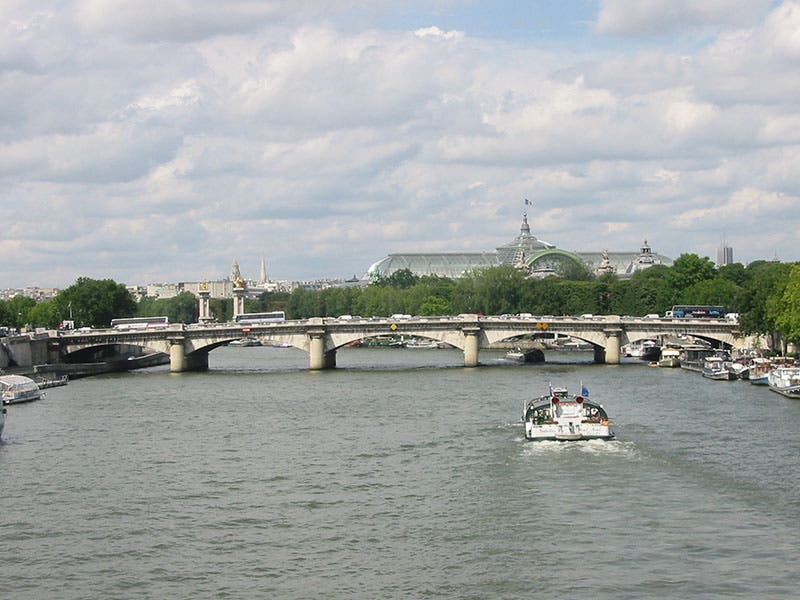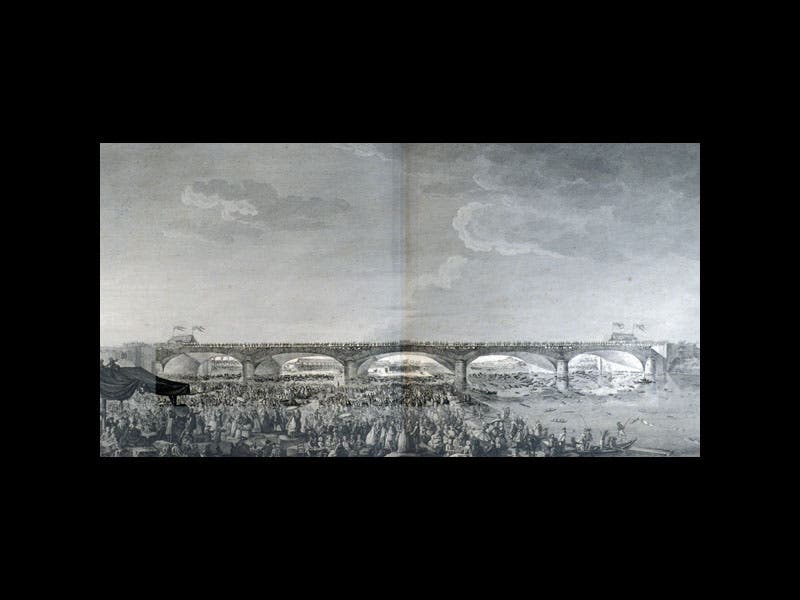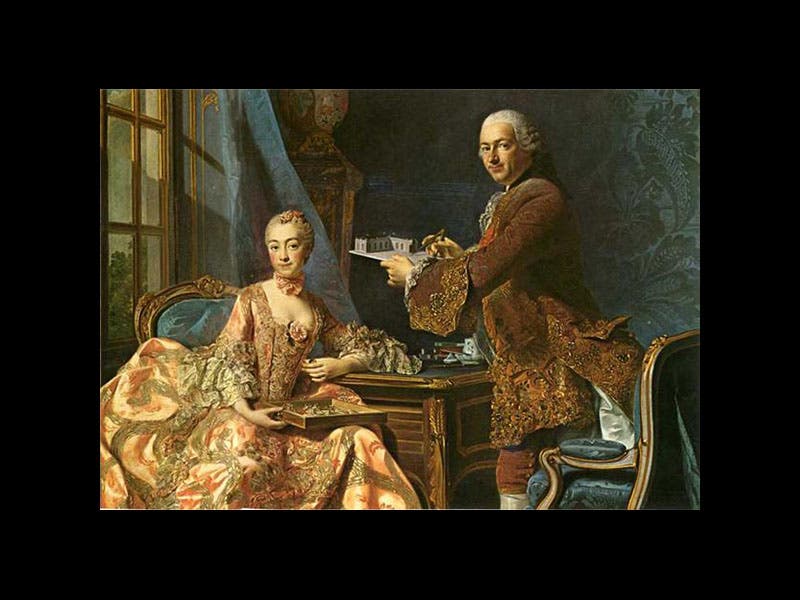Scientist of the Day - Jean-Rodolphe Perronet
Jean-Rodolphe Perronet, a French architect and engineer, was born Oct. 27, 1708. Perronet was the master of the low-arch stone bridge, many of which he designed and constructed throughout France. One of his most elegant bridges was erected across the Seine at Neuilly in the western suburbs of Paris, and was called the Pont de Neuilly; it opened for traffic in 1772. It consisted of five spans of nearly 130 feet each, stretching between piers that are only 13 feet thick, which makes it look light and open. The first image above is a view of the just-completed bridge as recorded by a contemporary painter. You will notice that there is a lot of dust and splashing water about, and there is timber floating in the river below, with quite a crowd watching on the near bank. That is because the engraving shows the moment just after the bridge was "decentered." Stone arch bridges require centering, a wooden scaffold that supports an arch until the keystone is inserted. Decentering, then, is the removal of the scaffolding. For this particular bridge, King Louis XV requested that all the centering be removed at the same time, and explosively. We trust the King and his court were duly amused by Perronet's compliance with the King's wish. The Pont de Neuilly stood for 170 years and could have stood much longer, but it was replaced in 1942 by a larger, and somewhat less appealing, structure (second image).
Another of Perronet's bridges was the Pont de la Concorde, which crosses the Seine near the Place de la Concorde in Paris, and was completed in 1791 (third image). It is similar to the Pond de Neuilly in having five low arches, and it is just as elegant, although it is quite a bit shorter. But it has the great advantage of still being there, which means you can and should see it when you go to Paris. It is, we believe, Perronet's only surviving bridge.
Perronet published an account of all his bridges in 1788, a beautiful 2-volume folio set with large and exquisite engravings, called Description des projets et de la construction des ponts de Neuilly, de Mantes, d'Orleģans & autres. The Library's copy of Perronet's book came to us when we acquired the Engineering Societies Library in 1995. We displayed it once, quite a few years ago, in our exhibition, Centuries of Civil Engineering (2002), open to the large folding plate that depicts the Pont de Neuilly, also at the moment of decentering (fourth image).
Perronet, being a prominent figure, was painted several times, but not more charmingly than in this portrait, with his wife, by Alexander Roslin (fifth image). It reminds one of another husband-and-wife portrait, painted about the same time by Jacques David, of the chemist Antoine Lavoisier and his wife, which is in Metropolitan Museum of Art in New York.
Dr. William B. Ashworth, Jr., Consultant for the History of Science, Linda Hall Library and Associate Professor, Department of History, University of Missouri-Kansas City. Comments or corrections are welcome; please direct to ashworthw@umkc.edu.


